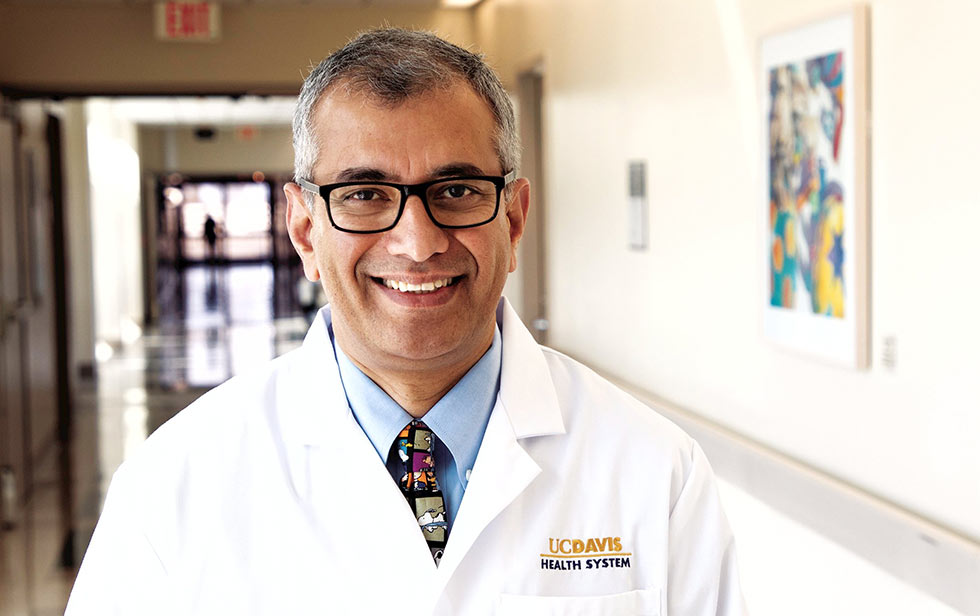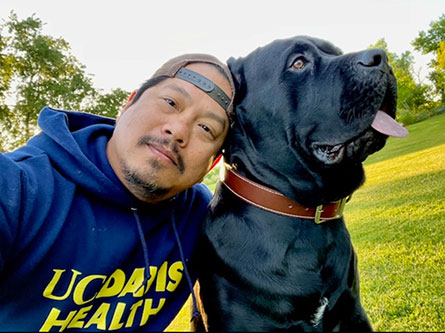Collaboration is the best medicine: Two UC Davis experts bring unique skills, experience to a global effort
Satyan Lakshminrusimha, a neonatologist at UC Davis Children's Hospital, knows all about sharing complex medical information. He combines his expertise in caring for the tiniest of babies with a passion for drawing that enables people to quickly understand a disease or health condition.
Nate Kuppermann is a determined pediatric emergency medicine researcher and physician. He’s well known for collaborating with clinician-researchers from around the U.S and world to gather data about disease and injury and establish the best emergency medicine practices for pediatric patients.
Working together to address COVID-19 in children, Lakshminrusimha and Kuppermann bring a formidable set of skills and knowledge in responding to the pandemic.
Worldwide, children younger than 10 years old likely make up less than 2% of COVID-19 cases. However, a newly identified and severe illness called multisystem inflammatory syndrome in children (MIS-C) has been linked to the novel coronavirus in perhaps thousands of children in the U.S. and Europe.
Lakshminrusimha and Kuppermann, and their colleagues at UC Davis Children’s Hospital, are part of an international network that’s monitoring and studying COVID-19 in children, including this related pediatric syndrome.

For Kuppermann, bringing together pediatric research experts to exchange information is the best way to understand and tackle a new and puzzling disease like COVID-19. He’s seen the power of a diverse team of experts. He helped establish a pediatric research group (PECARN) in the U.S. and is a principal investigator for the international Pediatric Emergency Research Networks (PERN).
“Collaboration is the best medicine,” says Kuppermann, distinguished professor and chair of Emergency Medicine at UC Davis Health.
He notes that physicians can’t begin to understand or treat disease in isolation. They need data, evidence and information to see patterns and recognize what works and what doesn’t.
“The network of researchers and hospitals around the world that we’re part of will play a fundamental role in our ability to successfully respond to the novel coronavirus in children,” Kuppermann says.
He and Lakshminrusimha are most recently concerned about MIS-C. This new form of COVID-19 has been compared to toxic shock syndrome and a very uncommon childhood illness called Kawasaki disease. It is an acute illness mainly affecting children younger than 5 years of age.
The COVID-19-related syndrome seems to affect the heart more frequently than the typical Kawasaki condition – and has been identified mainly in school-aged children rather than infants or toddlers.
Lakshminrusimha, using his skills as an illustrator, helped create an infographic for other clinicians to help them recognize the disease’s unique signs and symptoms in children. Before he became a neonatologist, he was an illustrator.

“When I became a physician, I noticed that we didn’t always explain things very well,” says Lakshminrusimha, who’s infographic was recently included in a journal article he co-authored. “Providing a visual guide, an illustration for a parent or an infographic for clinicians, improves understanding and awareness. Our infographic is an especially helpful tool right now because we’re facing a new disease with symptoms that haven’t really seen in children before.”
UC Davis Children’s Hospital has treated several patients with Kawasaki-like illnesses. Fortunately, the tests for COVID-19 came back negative. But the care teams continue to closely monitor for any young patients suffering from fever, red eyes, rash and abdominal pain. The COVID-19-related illness can progress rapidly to problems affecting the heart.
“We’re prepared for it,” says Lakshminrusimha. “It’s all part of the pandemic research that Dr. Kuppermann and I are doing with colleagues from around the world. It’s the best way to advance our preventive, diagnostic and therapeutic strategies for various conditions related to COVID-19 in children.”




